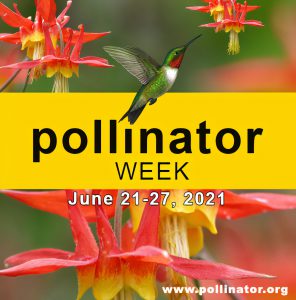 Florida is known for many of its “Fresh from Florida” commodities such as citrus, tomatoes, blueberries, strawberries, watermelons, beans, and sweet corn, but what role do honey bees play in the production of these crops? Did you know that honey bees are responsible for a majority of our fresh and nutritious fruits and vegetables, and contribute an estimated $20 billion to the crop industry by providing pollination services all over the United States? Why is a bee blog on the pesticide blog? To find out “what’s the buzz on bees?” keep reading.
Florida is known for many of its “Fresh from Florida” commodities such as citrus, tomatoes, blueberries, strawberries, watermelons, beans, and sweet corn, but what role do honey bees play in the production of these crops? Did you know that honey bees are responsible for a majority of our fresh and nutritious fruits and vegetables, and contribute an estimated $20 billion to the crop industry by providing pollination services all over the United States? Why is a bee blog on the pesticide blog? To find out “what’s the buzz on bees?” keep reading.
Florida has nearly 5,000 registered beekeepers with a total of over 650,000 managed colonies. Because of our climate, hundreds of thousands of migratory beekeepers and their honey bees make a stop in Florida during their travels across the country. This means serious business for the honey bees and the hard-working beekeepers.
Unfortunately, high colony loss rates of honey bees have been reported throughout the world. Stressors related to honey bee decline has been associated with Varroa destructor, nutrition, queen related incidences, and yes, even pesticides. The teaching, research, and extension at the UF IFAS Honey Bee Research and Extension Laboratory (HBREL) aims to reduce the amount of honey bee pests in Florida and encourage best management practices in every apiary. The UF HBREL educates all beekeepers, from small scale to large scale commercial beekeepers, and disseminates as much information as possible.
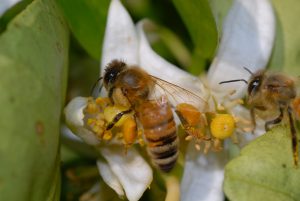
Challenges Facing Honey Bees and Pollinators
Insecticides can be a source of stress for honey bees and pollinators, they are designed to kill insects after all. There are many pesticides that contain different active ingredients approved for use on crops that target specific pests, and some of these active ingredients can affect honey bees. So how can pesticides be used without damaging non-target species like honey bees?
Honey bees foraging during the day outside the hive are most at risk to pesticide exposure. Plant foliage, pollen, nectar, and soil can all contain potential toxins after direct application or drift from certain pesticides. Suspected pesticide exposure is one of many biological and environmental factors associated with bee colony loss. Effects of certain pesticides on bees can vary from no harm to acute harm (bee or single colony death) to chronic harm (altered bee behavior or physiology, reduced reproduction, colony decline, or death).
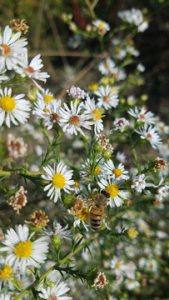
What does this mean for pest management in Florida?
Florida is a great place to live with the warm weather year-round. Unfortunately, our warm climate year-round give pest a chance to thrive. Producers use Integrated Pest Management (IPM), which seeks to use a multitude of tools, like mechanical methods, biological methods, and yes, pesticides, in combination to best reduce the impact of a pest while minimizing non-target damage. IPM is not pesticide last, but really IPM is about using ALL the right tools, at the right time, in the right place, to best manage pests while reducing non-target damage.
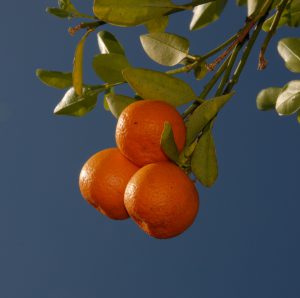
Knowing the potential stress of chemical control methods on pollinators, and the unique stresses facing Florida beekeeping, residential and commercial pesticide applicators can make informed decisions about their use by practicing good pesticide practices.
Current Pollinator Protection Practices
Protecting pollinators from pesticide exposure is on the forefront of many producers’ minds when considering pest control methods. There are a variety of best management practices that any pesticide applicator can utilize every day to minimize impacts on honey bees and pollinators, including:
- Obtaining a pesticide license to legally spray pesticides
- Following the label – THE LABEL IS THE LAW
- Employing IPM practices and using chemical control as a last resort
- Spraying pesticides at night (label permitting) to maximize safety
- Utilizing target pesticide application such as injecting, rather than broad application
- Selecting pesticides with less toxic formulations and fewer required applications
- Developing a pest management plan that considers bee foraging during bloom
- Maintaining a good relationship with beekeepers and notifying them in advance of an application
- Consulting with fellow producers, beekeepers, and Extension professionals for recommendations

Paying Attention to Pesticide Labels
Reading and properly interpreting pesticide labels (see Pesticide Label Series) and exposure warnings to honey bees and pollinators is vital. The EPA requires that if a product is intended for foliar application to crops and contains a pesticide toxic to pollinators, the label must include appropriate cautions. Examples of bee and pollinator hazard warning statements are:
- “This product is toxic to bees exposed to treatment and for more than five days following treatment.”
- “Applications to all crops may be made at any time. [Chemical A] is practically nontoxic to bees and wasps when used according to this label.”
Extension’s Role
Extension agents and specialists provide:
- educational classes to enhance knowledge of pollinator protection on topics such as Integrated Pest Management (i.e. monitoring techniques, pest and plant knowledge, and pesticide selection) and best management practices.
- training, testing, and necessary certifications required to apply pesticides legally
- information on up-to-date pollinator protection label changes during trainings and classes
- grower updates to inform producers on potential pest issues
- pesticide recommendations and education on how these pesticides impact pollinators
Understanding the importance of pollinators on our food system has brought increased awareness for pollinator protection programs and trainings. Producers can make a difference by making informed decisions about the pesticides they use, building positive relationships with beekeepers, and utilizing resources such as Extension services.
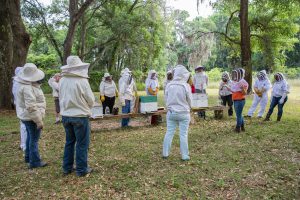
For more information on sustainable production practices and guidance on risk-reducing strategies to protect honey bee and pollinator populations, please use the following resources:
Honey Bee Research and Extension Lab: https://entnemdept.ufl.edu/honey-bee/
Honey Bee Research and Extension Lab blog: http://blogs.ifas.ufl.edu/entnemdept/honey-bee-lab/
Minimizing Honey Bee Exposure to Pesticides: https://edis.ifas.ufl.edu/pdffiles/IN/IN102700.pdf
 This blog was written by Amy Vu, Extension coordinator for the Honey Bee Research and Extension Lab. Amy Vu Bio
This blog was written by Amy Vu, Extension coordinator for the Honey Bee Research and Extension Lab. Amy Vu Bio
In honor of National Pollinator Week, the UF Honey Bee Research and Extension Laboratory (HBREL) and the UF/IFAS Pesticide Information Office (PIO) have “cross-pollinated” to write guest posts on each other’s blogs to share research & recommendations. Be sure to read both blogs (Honey Bee Lab Blog) and join Dr. Brett Bultemeier (PIO), Amy Vu (HBREL), Sylvia Willis (UF/IFAS Suwannee County), Kara Parham (HBREL), and Dr. Jamie Ellis (HBREL) for a multifaceted look at pollinator-friendly pesticide practices.
Honey Bee Research and Extension Lab Subscribe
Pesticide Info Office Subscribe
 0
0

